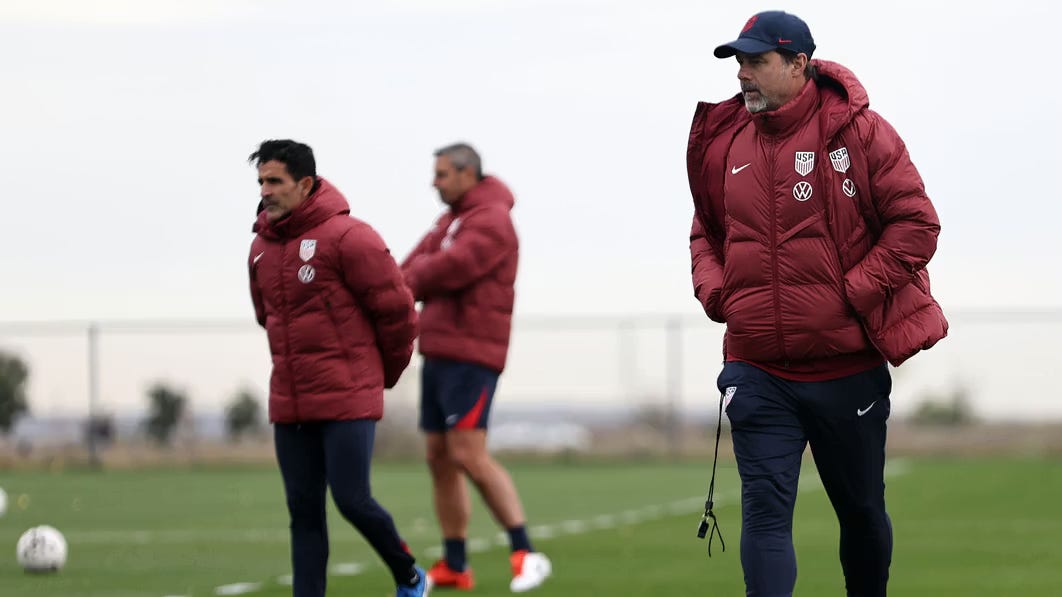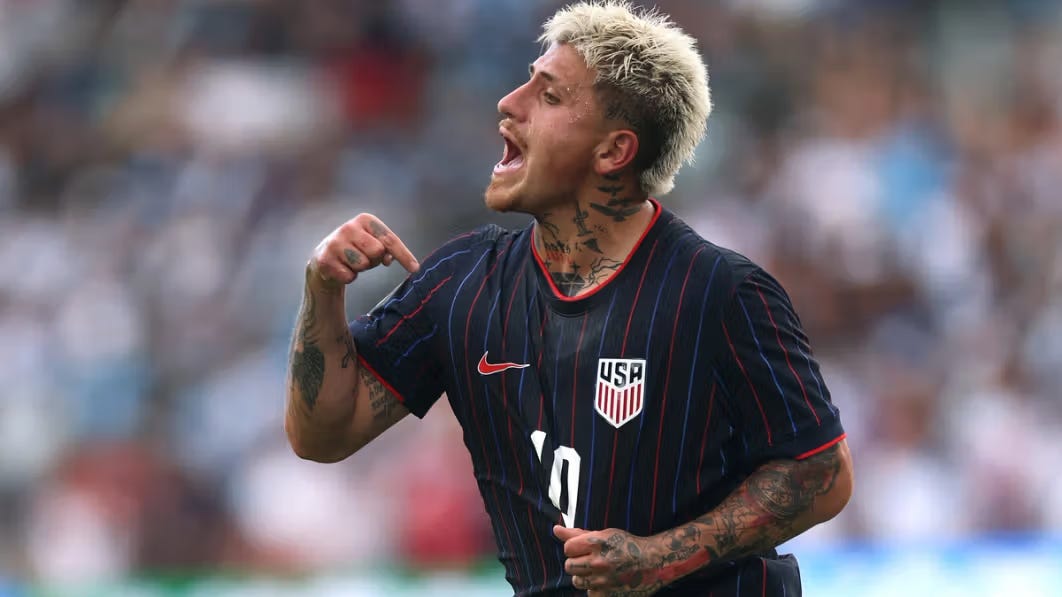Poch is no 'phony', he's building a squad
The USMNT are still far from the level needed but this window has shown that Mauricio Pochettino knows exactly what he is doing.
For a community that prides itself on being part of a global, cosmopolitan game, the American soccer world is surprisingly suspicious of foreign coaches. We saw it throughout Jurgen Klinsmann’s reign and it has been evident again with Mauricio Pochettino in charge of the national team.
Why are they here? What is the motivation? Do they understand ‘the American player’? Are they taking advantage, here for the big pay day while offering nothing that an American coach couldn’t provide? Bruce Arena might be a particularly blunt example of this curious soccer nativism but it’s always bubbling away under the surface in so much of the discourse.
And, to a degree, I get it. If there is a strong American option, that should be the first option. Jesse Marsch should have been given the job of taking over from Gregg Berhalter after the last World Cup.
But, having failed to do that, getting Pochettino for the USMNT was a great hire. The Argentine has proven himself at the highest level. His disappointments at PSG and Chelsea (two notoriously difficult jobs) didn’t undo the outstanding work he did with Tottenham Hotspur, who he took to a Champions League final.
The annoyance at the approach taken by the Argentine in his first year was understandable - to a degree. The whole process of preparing a squad for a World Cup with no qualification process almost inevitably leads to frustration for those who want to see a team looking ready for a World Cup on home soil but at times it did feel like the friendlies were being used as little more than trials or practice sessions.
But, after a creditable draw against Ecuador and a decent win over Australia in this window, following a solid victory over Japan, the method rather than the madness is now evident.
Pochettino has been testing out his player pool, making sure he has taken an up-close look at as many realistic options as possible. It meant some players were called up, who it was hard to imagine being part of a World Cup squad. Rather than take established opinions about those players and simply accept them, the coach brought them in and took a good look.
And why not? Yes, it meant some players not ready yet for the big stage, started in friendlies and Gold Cup matches and others, who almost certainly will start next June, were left at home or allowed to take breaks. But it has been a process of elimination and it is one that has led to some useful discoveries.
The frustration of watching those disjointed performances was real - they were tough matches for fans. But while it was legitimate to question the extent to which the coach was experimenting, the idea that he should simply be fielding his best team and trying to win every match like it was a World Cup knockout game was absurd.
Also absurd was the tone of the criticism. Pundit Hercules Gomez describing Pochettino as a “phony” was ridiculous and hugely disrespectful but he wasn’t the only one questioning the coach’s commitment and professionalism. We also had the chorus of ex-USMNT greats questioning the attitude of the coach and his players in what seemed at times like a competition to find who could be the most outraged.
Look, the international game has changed. There is no such thing as a ‘First Eleven’ any longer and hasn’t been for some time. With five subs per game since COVID, there is an entire second team sat on the bench. The squad size for tournaments is 26 not 22 and when you factor in the need to have back-ups ready in case of injury, the broad roster that a coach needs to manage is over 40 players.
Add in the factor that these players are spread all over the world as well as in MLS and you have a complicated job in assessing talent and building a roster. Pochettino could have better explained his process (his difficulties with English don’t help at times) but the pundits could also have done better in appreciating the scale of the task and explaining that to the public. Instead they played to the crowd.
So instead of howling that Max Arfsten isn’t as good as other options at left-back, the pundits could have remembered that players get injured and that Pochettino now knows exactly what Arfsten’s strengths and weaknesses are as a back-up. The same applies to Alex Freeman on the right.
Pochettino now also knows that Diego Luna has a great attitude and can be an interesting option from the bench and cover for Christian Pulisic. He knows that Cristian Roldan is more than just a useful guy to ‘have around’ in the locker-room. He now understands that Haji Wright is a confidence player who is in a rich vein of form and can be an option when Folarin Balogun isn’t firing. But, at the same time, he has also learnt about some players who haven’t impressed and won’t be around in next year’s squad and some young players who aren’t ready for this cycle. He wouldn’t have known any of this, for sure, without experimenting.
The coach has been much better at explaining his approach to creating a new team culture and this also reveals some of his choices. He has been testing players, seeing how they react to different situations and disappointments. Better to find out now who the sulkers are who react the wrong way to selection choices. Better to discover now who your leaders are and who hides when the going gets tough. If there were cliques or there was complacency, better to root that out now.
The two games in this window were encouraging but the level still isn’t where Pochettino will want it to be. It is not consistent enough throughout the game, the intensity isn’t constant enough and the defense remains a worry. The coach seems to have settled on playing three at the back but don’t be surprised if he moves away from that at some stages before the tournament.
Pochettino is ultimately right that the team needs to peak in June, 2026 not now. After all, the history of the World Cup is littered with teams who were brilliant in qualifying or who shone in pre-tournament friendlies and who then crashed out in the group stage.
Next May, Pochettino will call 26 men into his camp to get ready for the tournament of their lives. They will all be in a hotel together all day and night and training together every day. That is when the real chemistry is created, when the real tactical work is completed.
Pochettino knows what he is doing. If he didn’t care or wasn’t committed he could make his life easy by calling up the same old squads every time and simply say they are the best available. He is doing it the hard way, trying to make sure he hasn’t missed any hidden gems or not noticed any red flags.
The time to judge the coach is after the World Cup. Until then he deserves a little more understanding and a lot more respect.







I’ll admit that watching Pochettino call in certain players and constantly change the starting lineup has been frustrating. I was hoping for more consistency so the U.S. could build better cohesion as a unit before the World Cup. But over the last couple of windows, I’ve started to see players step up. Some guys look uncomfortable about their place on the team, and maybe that’s exactly what’s needed. With no World Cup qualifiers, that tension and urgency have to come from somewhere. Making every player feel like they need to bring their A-game every time and that their spot isn’t guaranteed might be what keeps this team sharp.